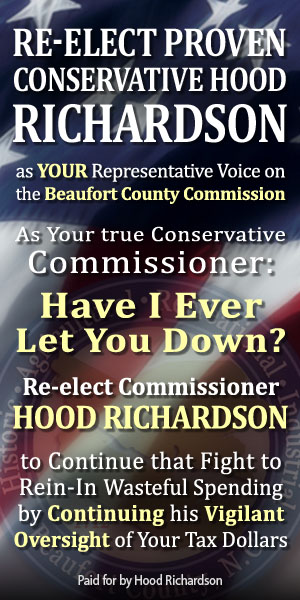In Difficult Times Good People gravitate towards Absolute Truth
Study of whether blondes get more contributions is an example of what is wrong with too much academic research
The UK Dailymail.com ran a story Friday (12-28-12) that was headlined "How blondes can raise more money for charity going door to door" which was a typical Elite Media report of arcane academic "research" that resulted from a project done in Pitt County, presumably while the author was a faculty member at ECU, although we are not told those details.
Click here to read the story.
So if the Red Cross or local fire department wants to raise more money (23% more) it should send good looking blondes to white folks' homes asking them to donate. Do not send them to black folks' homes because they will not be given any/as much in donations. Do tell.
Commentary
Much of the advance in human knowledge comes from our university systems. We live better lives because of some of it. But there is, at the same time, much academic research that is literally not worth the paper it is printed on or the electricity it takes to produce it.
Having said that, we would suggest there are three stories here. The first is about charitable donations. The second is about what it says about academic research and the third is how foolish the Elite Media is in reporting such studies. Here's some of why it is nonsense, as reported.
There were 44 students involved. Of that number they were divided between blondes, brunettes and minorities. We're not told, that 23 of the 44 were females. So we'll assume that by the Law of Averages there were an equal number of females were blonde, brunette and minority. That would mean about a half-dozen blondes. All 44 of the students were sent to 1,755 households where 522 actually contributed money. So 29% contributed anything. This is important: 71% did not contribute anything, no matter the hair color of the solicitor. So we would contend that the title of the article should have read: "Few contribute to helping study natural disaster mitigation, no matter what the gender or appearance of the solicitor."
The only variable they identify for the households was the race of the person responding. We would suggest that the gender of the potential donor was more significant, but actually either all of the solicitors did a poor job or the cause was not deemed very worthy. So there is a big hole in the data at this point.
The authors do report that significantly fewer blacks donated to blondes. We don't doubt that. Numerous studies have shown blacks to be less generous in making donations, even tips to waiters and waitresses. We know a blonde who is a waitress at a local restaurant that is a favorite of blacks and she reports that "I always get less or nothing in tips from black customers." But none of the other wait staff gets significant tips from blacks either, even including the black wait staff. So what does that mean? Simply that there was another very significant variable operating in the study being reported.
But we suspect propensity to contribute was not the only variable being ignored. We would suspect that unless Professor Price found a way to control for the "pitch" each solicitor made that he missed probably the most important variable determining whether a contribution was made. How are we to know that blondes did not have the best pitch, regardless of the color of their hair.
Now if you were inclined when you read the Mail article to think that sexuality was the driver here then (shame on you) we would want to know how the female students were dressed and what the age of the males answering the door were. We'd even want to know if the solicitor was invited in.
You get the point. There are many variables operating here and Professor Price is dealing with what may have been the least significant ones.
The problem here is that the numbers (6 blondes) is so small that only a few responses could have made a significant difference. We're not told how much variance there was in the data. Only with that information do we have even a remote chance of determining whether hair color was what was driving results.
We suspect geography made a greater difference. We doubt that many donations were collected in low-rent housing projects. We suspect the correlation between property values and donations was as high as or probably even higher than with hair color. And certainly those people who had experienced natural disaster catastrophes such as Hurricane Floyd, which devastated much of Pitt County just a few years earlier, probably reacted differently than did others without such experience, regardless of the hair color, personality or pitch being made for donations.
But the major question we would raise about the Mail article is: So what?
What this sloppy research reveals is one of the things that is seriously wrong with the university system these days. This guy did a poor job on a meaningless project and wrote an article in a "referred journal" (Economics Letters) which would have not been read by a dozen people not kin to the author had not an Elite Media outlet wanted to put a sexy picture on their front page (just as we did).
Once upon a time I served on the ECU Research committee. At one meeting we were considering academic research should be evaluated for purposes of receiving awards and recognition. I made a motion that "impact on practice" be one of the criteria. It failed to get a second. Nobody was willing to put research to that test. The committee also rejected "number of citations," which is a measure of how many times a particular article has been used in someone else's work. Neither of these standards was acceptable to my august colleagues.
Whether blondes garner more charitable donations than brunettes is not something most of us would weight as a good way to spend state taxpayer dollars for university faculty salaries. This study was done in 2008, about the time the housing bubble burst and we went into the worst recession since the Great Depression. And for much of Eastern North Carolina it is worse than the Great Depression. Meanwhile, about the same time Beaufort's hospital was going down the tubes and we were wasting ten million dollars on a failed economic development program. One has to wonder if the really smart economists at ECU could not have found something that would have had a more meaningful impact on the economy of Eastern North Carolina than whether blondes collect more donations than brunettes.
The problem this "study" illustrates is the relative worthlessness of far too much of what passes as academic research in our university system. "Big toe research" someone called it (correlating the size of people's big toe to things like intelligence, leadership and such.
But Professor Price got a vita entry out of the gig. That's all that really matters. Not whether anybody actually read the study (prior to the Elite Media using it) or whether it ever made any real difference in the real world. It added to his list of publications. He probably got tenure or a promotion out of it.
And the study did not even include pictures of the blondes.
Delma Blinson writes the "Teacher's Desk" column for our friend in the local publishing business: The Beaufort Observer. His concentration is in the area of his expertise - the education of our youth. He is a former teacher, principal, superintendent and university professor.
Go Back
Click here to read the story.
So if the Red Cross or local fire department wants to raise more money (23% more) it should send good looking blondes to white folks' homes asking them to donate. Do not send them to black folks' homes because they will not be given any/as much in donations. Do tell.
Commentary
Much of the advance in human knowledge comes from our university systems. We live better lives because of some of it. But there is, at the same time, much academic research that is literally not worth the paper it is printed on or the electricity it takes to produce it.
Having said that, we would suggest there are three stories here. The first is about charitable donations. The second is about what it says about academic research and the third is how foolish the Elite Media is in reporting such studies. Here's some of why it is nonsense, as reported.
There were 44 students involved. Of that number they were divided between blondes, brunettes and minorities. We're not told, that 23 of the 44 were females. So we'll assume that by the Law of Averages there were an equal number of females were blonde, brunette and minority. That would mean about a half-dozen blondes. All 44 of the students were sent to 1,755 households where 522 actually contributed money. So 29% contributed anything. This is important: 71% did not contribute anything, no matter the hair color of the solicitor. So we would contend that the title of the article should have read: "Few contribute to helping study natural disaster mitigation, no matter what the gender or appearance of the solicitor."
The only variable they identify for the households was the race of the person responding. We would suggest that the gender of the potential donor was more significant, but actually either all of the solicitors did a poor job or the cause was not deemed very worthy. So there is a big hole in the data at this point.
The authors do report that significantly fewer blacks donated to blondes. We don't doubt that. Numerous studies have shown blacks to be less generous in making donations, even tips to waiters and waitresses. We know a blonde who is a waitress at a local restaurant that is a favorite of blacks and she reports that "I always get less or nothing in tips from black customers." But none of the other wait staff gets significant tips from blacks either, even including the black wait staff. So what does that mean? Simply that there was another very significant variable operating in the study being reported.
But we suspect propensity to contribute was not the only variable being ignored. We would suspect that unless Professor Price found a way to control for the "pitch" each solicitor made that he missed probably the most important variable determining whether a contribution was made. How are we to know that blondes did not have the best pitch, regardless of the color of their hair.
Now if you were inclined when you read the Mail article to think that sexuality was the driver here then (shame on you) we would want to know how the female students were dressed and what the age of the males answering the door were. We'd even want to know if the solicitor was invited in.
You get the point. There are many variables operating here and Professor Price is dealing with what may have been the least significant ones.
The problem here is that the numbers (6 blondes) is so small that only a few responses could have made a significant difference. We're not told how much variance there was in the data. Only with that information do we have even a remote chance of determining whether hair color was what was driving results.
We suspect geography made a greater difference. We doubt that many donations were collected in low-rent housing projects. We suspect the correlation between property values and donations was as high as or probably even higher than with hair color. And certainly those people who had experienced natural disaster catastrophes such as Hurricane Floyd, which devastated much of Pitt County just a few years earlier, probably reacted differently than did others without such experience, regardless of the hair color, personality or pitch being made for donations.
But the major question we would raise about the Mail article is: So what?
What this sloppy research reveals is one of the things that is seriously wrong with the university system these days. This guy did a poor job on a meaningless project and wrote an article in a "referred journal" (Economics Letters) which would have not been read by a dozen people not kin to the author had not an Elite Media outlet wanted to put a sexy picture on their front page (just as we did).
Once upon a time I served on the ECU Research committee. At one meeting we were considering academic research should be evaluated for purposes of receiving awards and recognition. I made a motion that "impact on practice" be one of the criteria. It failed to get a second. Nobody was willing to put research to that test. The committee also rejected "number of citations," which is a measure of how many times a particular article has been used in someone else's work. Neither of these standards was acceptable to my august colleagues.
Whether blondes garner more charitable donations than brunettes is not something most of us would weight as a good way to spend state taxpayer dollars for university faculty salaries. This study was done in 2008, about the time the housing bubble burst and we went into the worst recession since the Great Depression. And for much of Eastern North Carolina it is worse than the Great Depression. Meanwhile, about the same time Beaufort's hospital was going down the tubes and we were wasting ten million dollars on a failed economic development program. One has to wonder if the really smart economists at ECU could not have found something that would have had a more meaningful impact on the economy of Eastern North Carolina than whether blondes collect more donations than brunettes.
The problem this "study" illustrates is the relative worthlessness of far too much of what passes as academic research in our university system. "Big toe research" someone called it (correlating the size of people's big toe to things like intelligence, leadership and such.
But Professor Price got a vita entry out of the gig. That's all that really matters. Not whether anybody actually read the study (prior to the Elite Media using it) or whether it ever made any real difference in the real world. It added to his list of publications. He probably got tenure or a promotion out of it.
And the study did not even include pictures of the blondes.
Delma Blinson writes the "Teacher's Desk" column for our friend in the local publishing business: The Beaufort Observer. His concentration is in the area of his expertise - the education of our youth. He is a former teacher, principal, superintendent and university professor.
| McCrory transition hitting a few bumps? | Teacher's Desk, Editorials, Op-Ed & Politics | Buyer Beware: Snake Oil sales pitches flying fast and furious in DC, Raleigh |






















